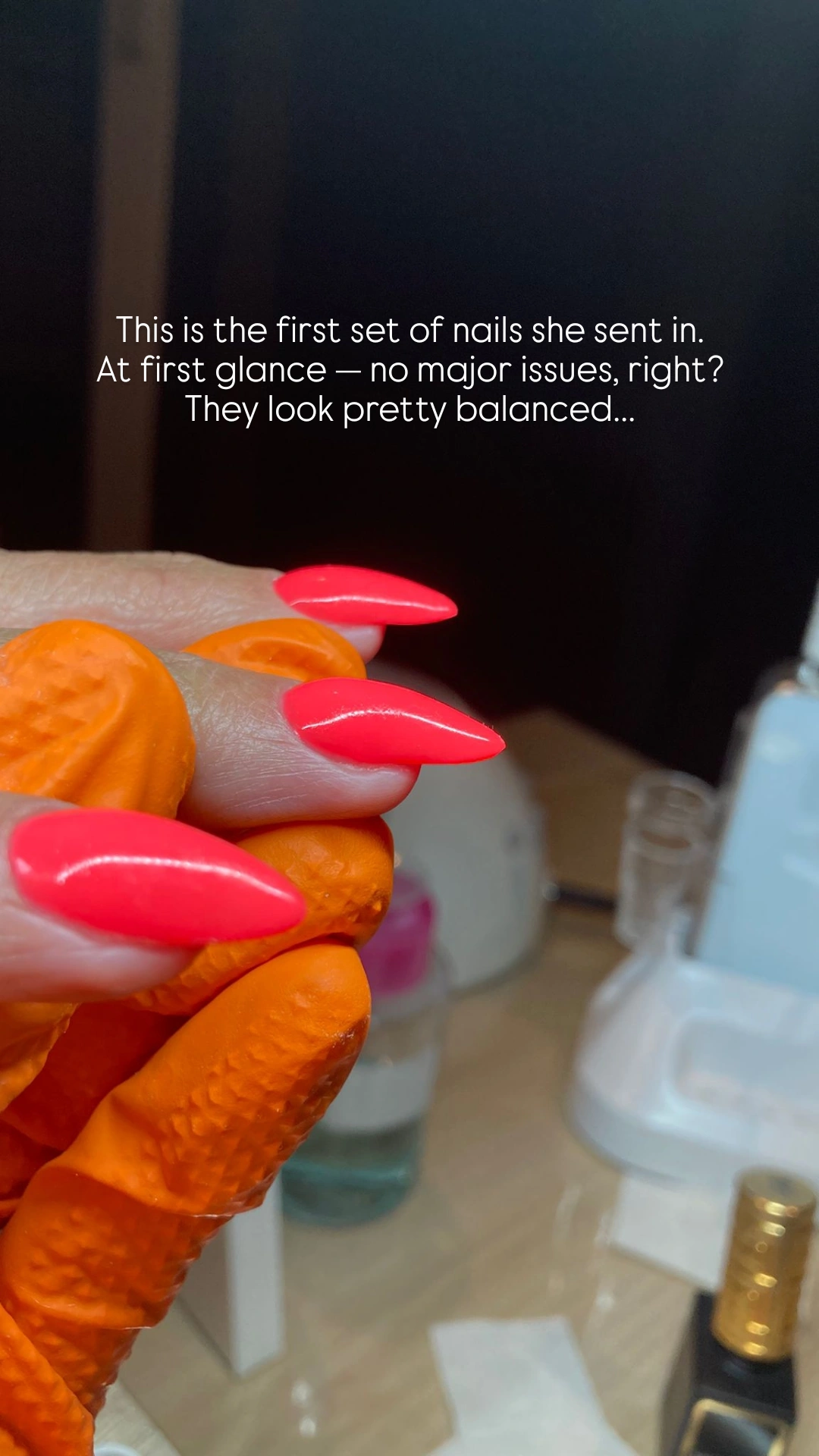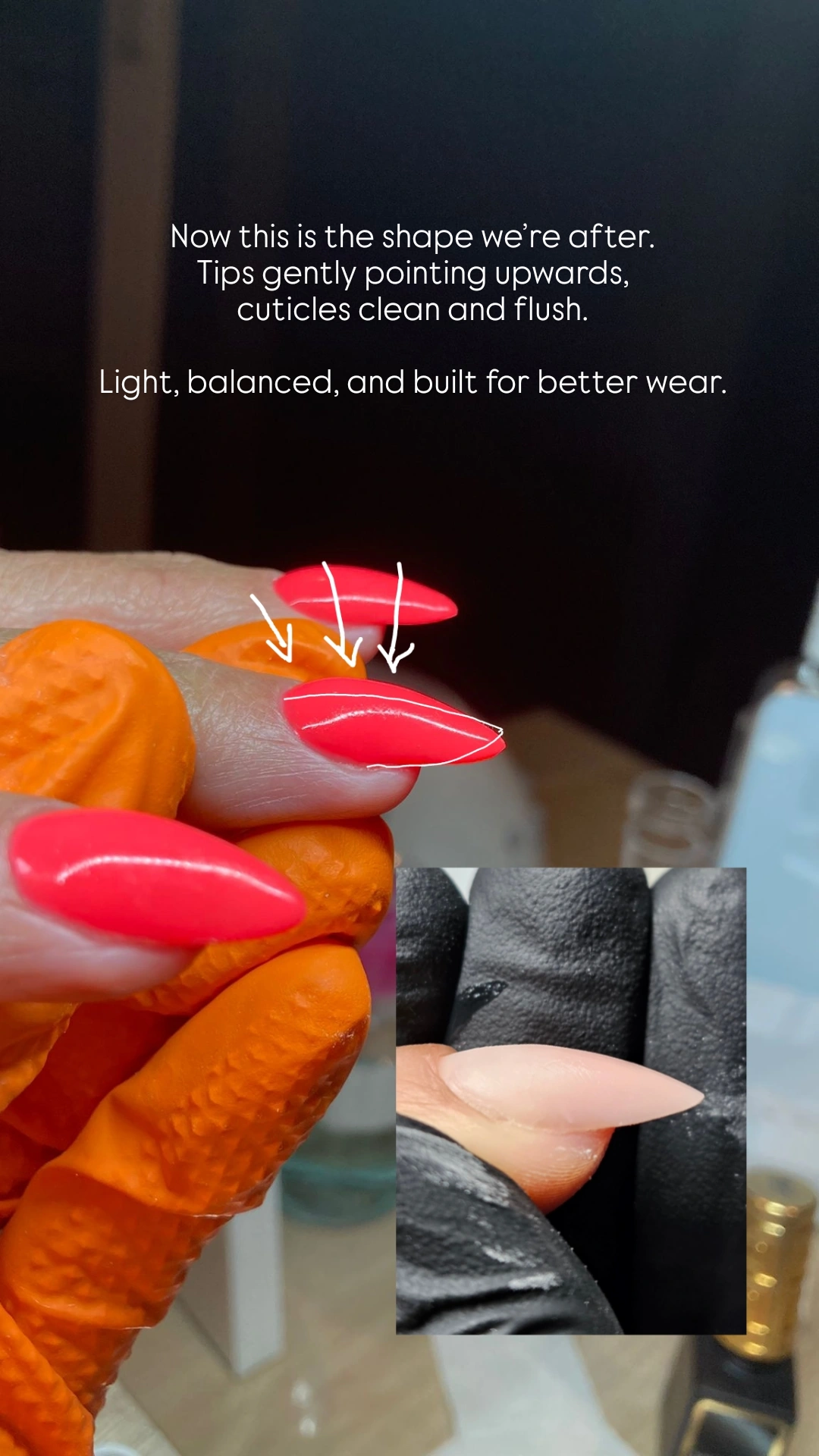When Practise Isn't Enough
- Maya

- Jul 21
- 3 min read
Updated: Jul 22
You can keep pushing. You can keep practising.
But if nothing’s changing… maybe it’s time to look at what you don’t know yet.
Not long ago, a fellow nail tech, Zuzka, reached out for help. She was struggling with lifting on a client who had downward-growing nails. She was doing everything she knew how—but something wasn’t working.
When she sent over pictures of the set, the shape hit me straight away. It took her four hours to complete, and more than an hour of that was spent on nail prep alone.
Here’s what I noticed immediately:
It wasn’t just about prep. It was the structure that was off.
Zuzka balanced the nails like she would on a flat, square nail plate—but her client had almond-shaped nails with a strong downward curve. That’s a whole different ballgame. And unless you've been trained to work with different natural shapes, you’re likely to miss it. You try your best, you work hard, but you're often working with incomplete knowledge.
That’s exactly what was happening here.
Her set was thick, bumpy, and not quite right—but Zuzka did her best with the information she had. After a bit of guidance from me, she re-balanced the set. It took her another four hours, but this time the shape was spot on—and the transformation was huge.

By the next infill, everything went smoother. Faster. Easier.
Her client still came back with two missing nails—but we also realised that her four-week return pattern wasn’t helping. A three-week schedule would be much better for this particular nail type.
When nails still lift even after you’ve got the structure and shape right, that’s when it’s time to look into your base coat, or maybe even switch the enhancement product you’re using. Every detail matters—but only if you know where to look.
Zuzka is now achieving better results with this client, and her speed is improving too.
When Practise Isn't Enough
Here’s the truth: trial and error can teach you some things, but it will cost you time, money, and confidence.
The faster route? Learn from someone who's already been through it.

That’s exactly why I created the Nailing It Upskilling Manual.
Inside, you’ll find real-life case studies, step-by-step structure breakdowns, and practical advice on how to deal with downward or upward-growing nails. You'll learn not only how to do things, but why they matter.
This kind of knowledge doesn’t just make you better.
It makes your life easier—and your services stronger.
Stop guessing. Start growing.
You don’t need to do it the hard way.
Dealing with Downgrowing Nails? Read This First
Downgrowing nails can create that unwanted claw-like effect — especially when clients have a strong natural curve or their free edge starts pointing downward. Here's how I handle it step by step:
1. Reassess the Nail Shape
Start by observing the natural nail carefully. The goal is to create a nail that points slightly upward at the free edge — this balances the nail when it grows out and prevents that clawed appearance.
2. Do Not Shorten Before You File
Don’t clip or file the length straight away. You’ll be removing some of that length while filing at an angle — so if you shorten it first, you may end up with nails that are way too short. If your client want to keep the length, you might actually add some extra product.
3. File at a 45° Angle
Use a 45-degree angle underneath the free edge to file off the downward curve. This helps visually lift the nail without making it look bulky or over-filed. Filing this way will naturally reduce some length — which is why you don’t pre-shortcut it.
4. Use the Natural Apex
If your client has a naturally high apex, there’s no need to add too much product to build one. Work with the natural structure — let their apex become part of the final shape, especially when using BIAB or builder gel.
5. Refine the C-Curve With an E-file
To keep the nail strong and balanced, use an e-file underneath to clean up and refine the C-curve. Downgrowing nails often end up with a flat-looking free edge — which doesn’t help either the structure or the final look. A clean, curved underside makes a huge difference in appearance and wear.
Some nails will need rebalancing at every appointment, while others can go a bit longer - every other visit. Some clients can may have just one or two nails that grow downward, while others might have it on four to six fingers. It really depends on the person.
Maya xx










